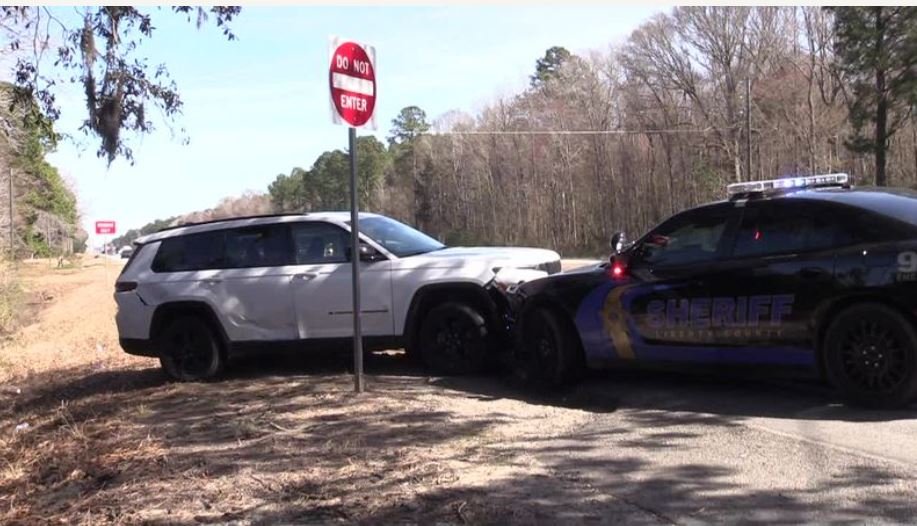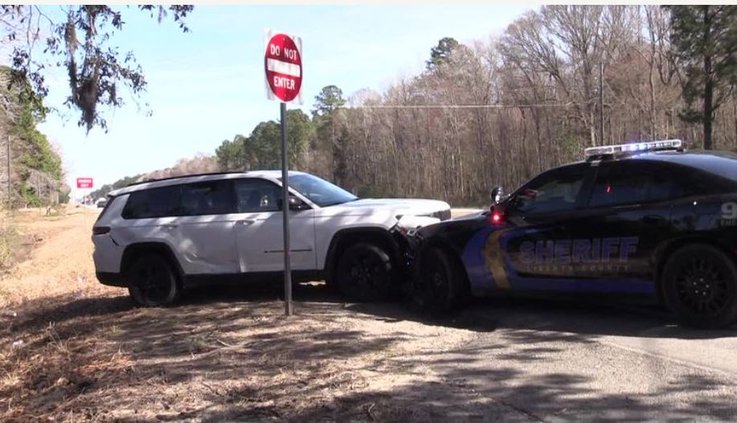RICHMOND HILL – A suspect who led Liberty County sheriff’s deputies on a chase that took them into Bryan County on Tuesday morning is in custody.
LCSO Capt. Dennis Poulsen said deputies initially responded to a domestic disturbance. Once there, they determined the subject had done some physical harm to his significant other and attempted to make contact with him. They also discovered he had several warrants from different law enforcement agencies.
While attempting to detain him for those warrants and continue their investigation, they attempted to tase the subject but were unsuccessful. The suspect then fled into the woods.
A short time later, a vehicle they had spotted previously was gone, and deputies pursued the vehicle. Eventually, the deputies performed a PIT maneuver on the suspect’s vehicle, and the suspect stopped and tried to hit a deputy but ended up crashing. The suspect then fled into the woods, and the Liberty County Sheriff’s Office, along with the Bryan County Sheriff’s Office, Midway Police and Richmond Hill Police, set up a perimeter.
“Thanks to everybody, including the Georgia State Patrol, we got the guy,” Capt. Poulsen said.
The suspect, identified as Devin Michael Thompson, is being charged with fleeing and eluding, battery under the Family Violence Act, obstruction and criminal trespass damage to property.
-Lewis Levine contributed to this report.

